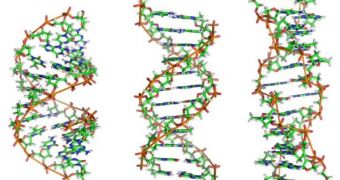Despite having a “unitary” sound to their names, carbon nanotubes (CNT) can actually be of varied compositions and structures, as determined by their electronic properties. However, when they are produced in bulk, many types of CNT are generated in the same space, and disentangling something that is a few nanometers across is fairly impossible. Now, experts from the DuPont and Lehigh University have developed a method that makes use of micro-DNA strands to do the sorting.
The result of the cooperation between the two institutions is detailed in the July 9th issue of the respected scientific journal Nature. The experts explain that many forms of CNT have significantly different electronic, thermal and structural properties, which are determined by the way the inner structure of the tubes is arranged, and also by their shapes. Separating the various types is essential to achieving progress in the field of nanotechnology, and to using the end-products in electronic and medical applications, among others.
“A systematic method of purifying every single-chirality species of the same electronic type from a synthetic mixture of single-walled nanotubes is highly desirable, but the task has proven to be insurmountable to date,” the experts wrote in the Nature entry, entitled “DNA sequence motifs for structure-specific recognition and separation of carbon nanotubes.” Authors include DuPont Central Research and Development scientists Ming Zheng and Xiaomin Tu, Leigh Chemical Engineering Professor Anand Jagota, as well as Leigh chemical engineering graduate student Suresh Manohar.
“The interesting discovery made by Tu and Zheng is that if you choose the DNA sequence correctly, it recognizes a particular type of CNT and enables us to sort that variety cleanly. This kind of practical improvement brings us closer to manufacturing possibility,” Jagota argues. The authors say that the technology that allows for the use of DNA sequences as separating agents was first created in 2003, and that their own research focused on refining the previous finds, which only identified 20 types of DNA binding to certain CNT “species.”
“We are very interested in the biomedical applications of this work. What does this say about how DNA interacts with nanomaterials? Will they be harmful inside the body? Can we take advantage of the interaction for therapeutic applications? It's a big, open field,” Jagota concludes.

 14 DAY TRIAL //
14 DAY TRIAL //